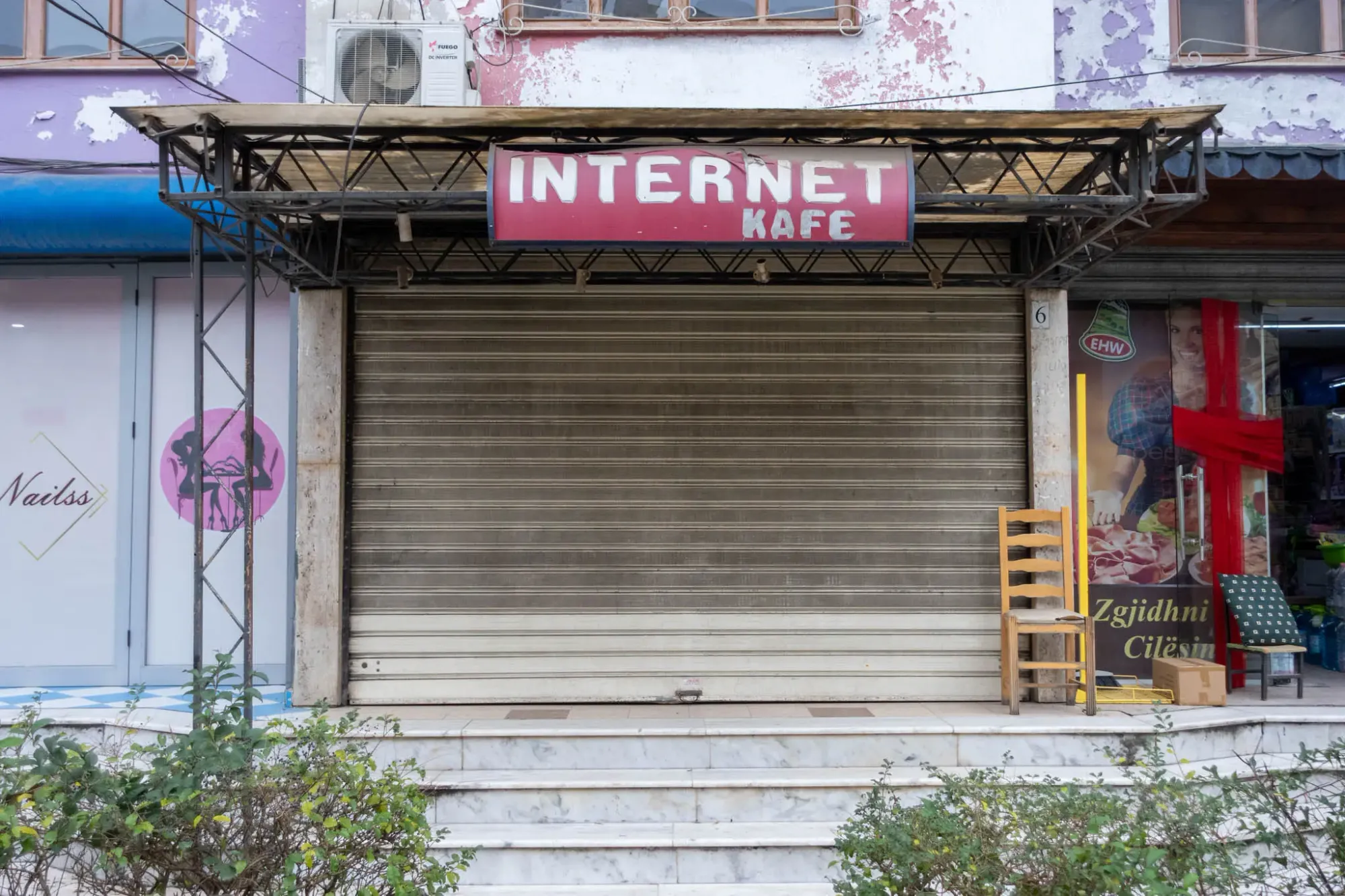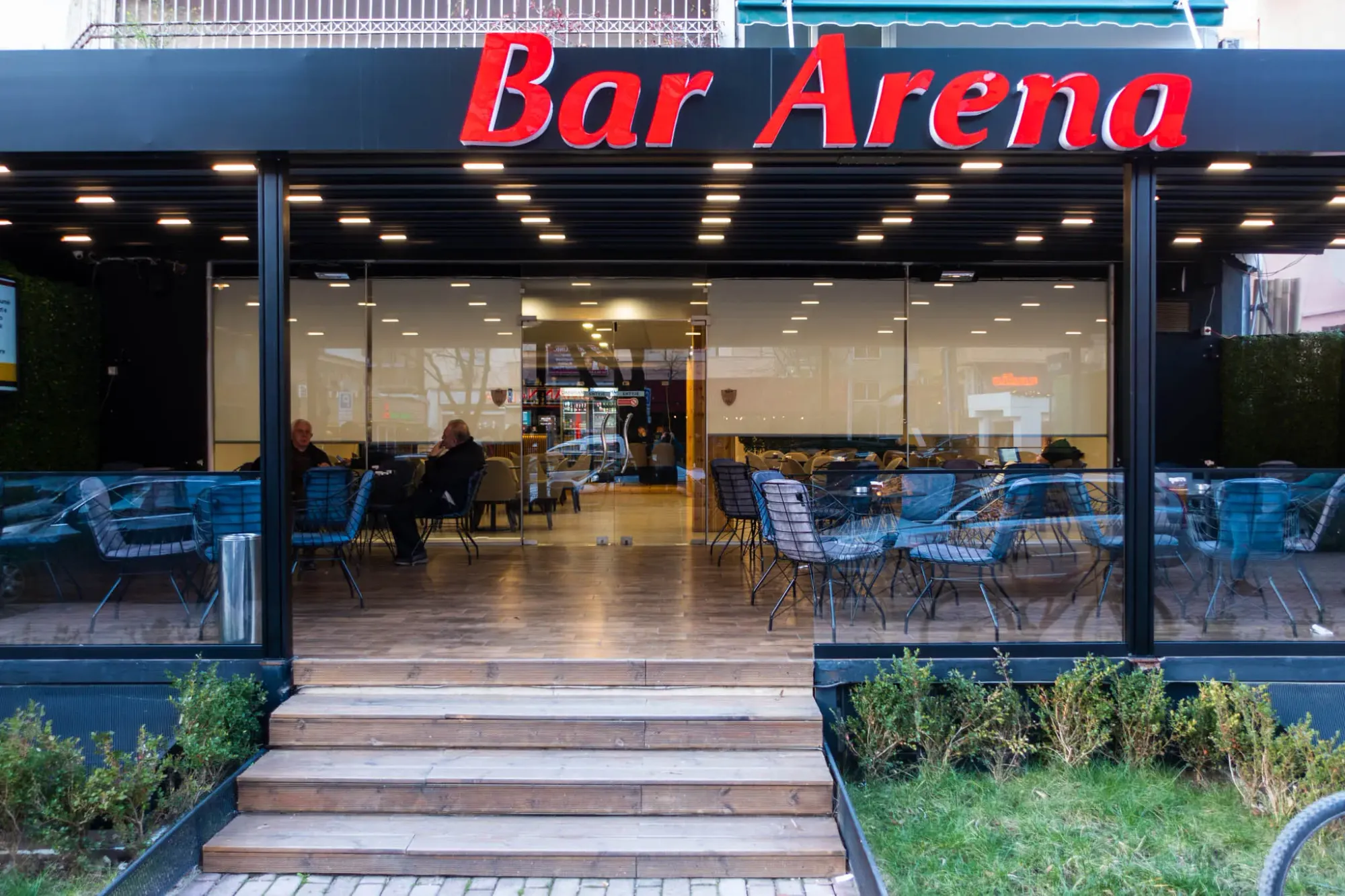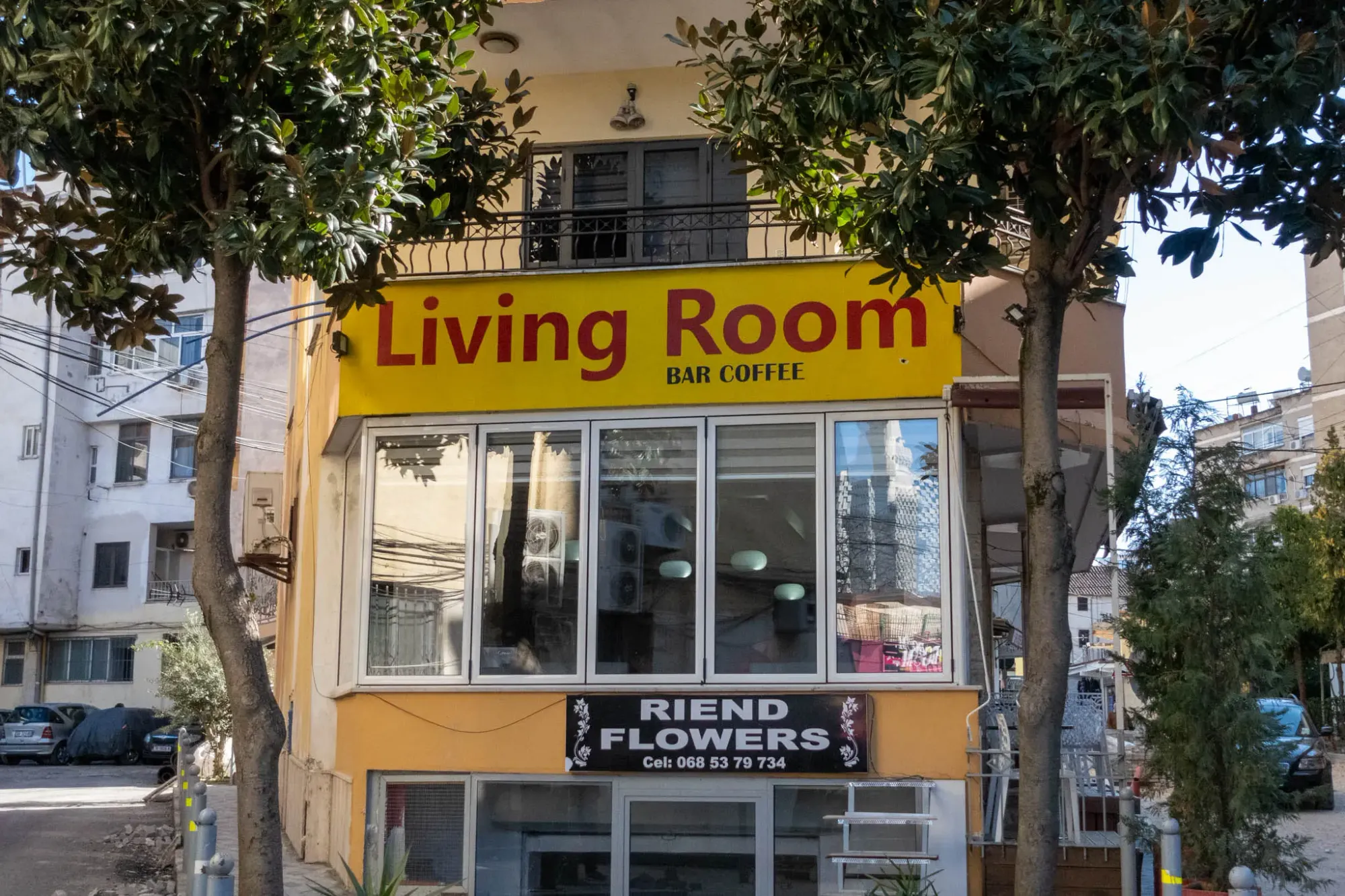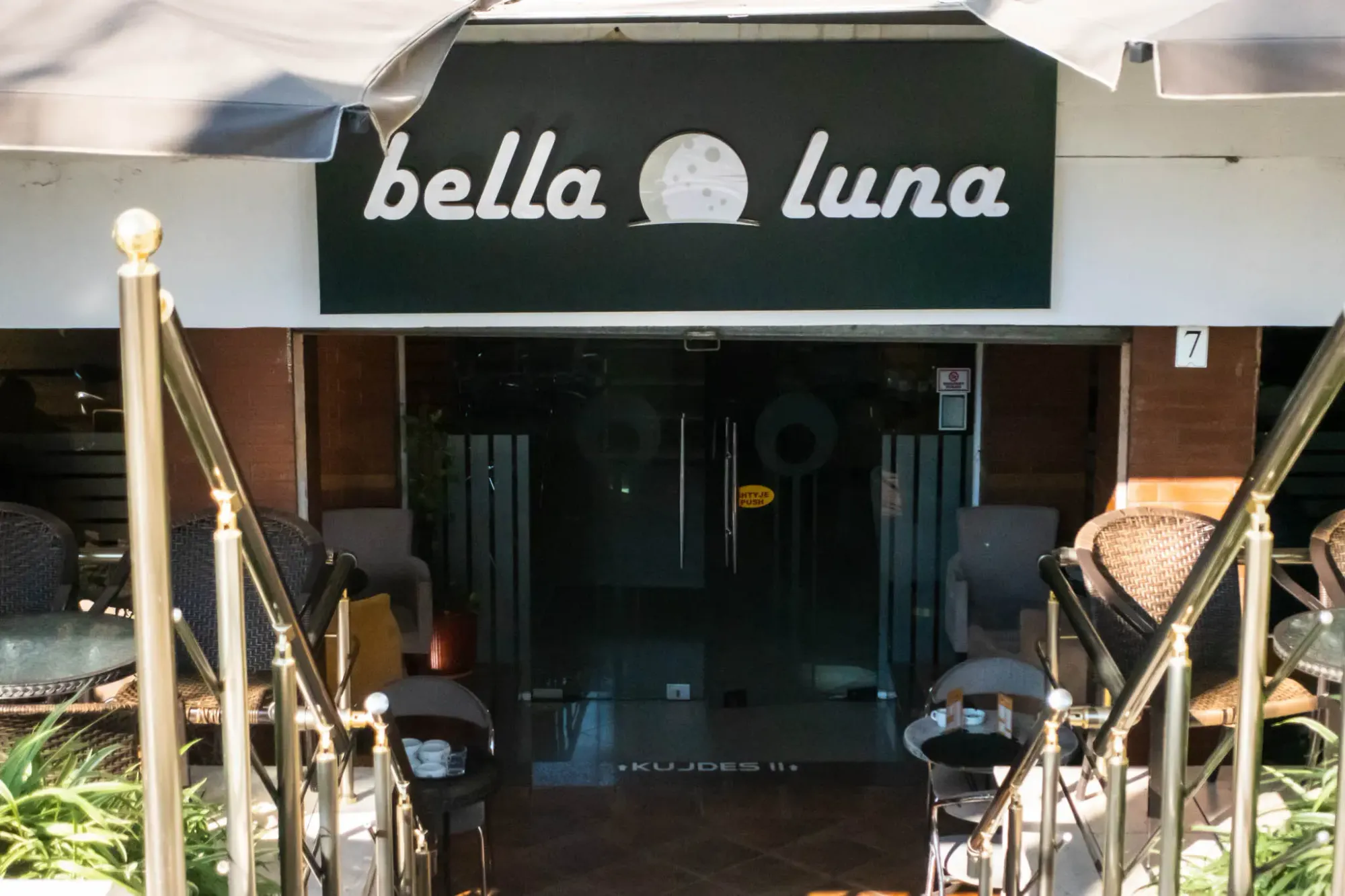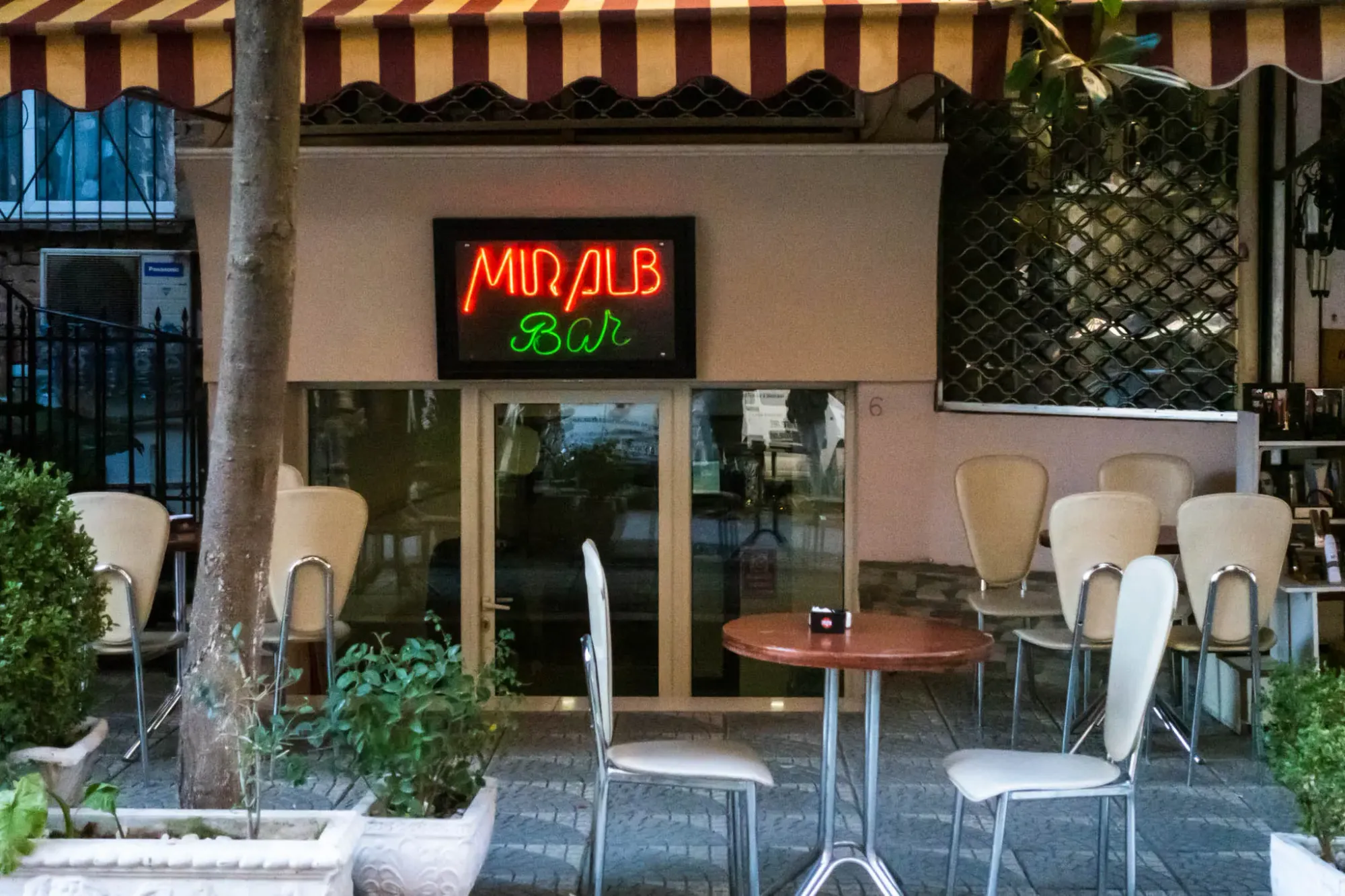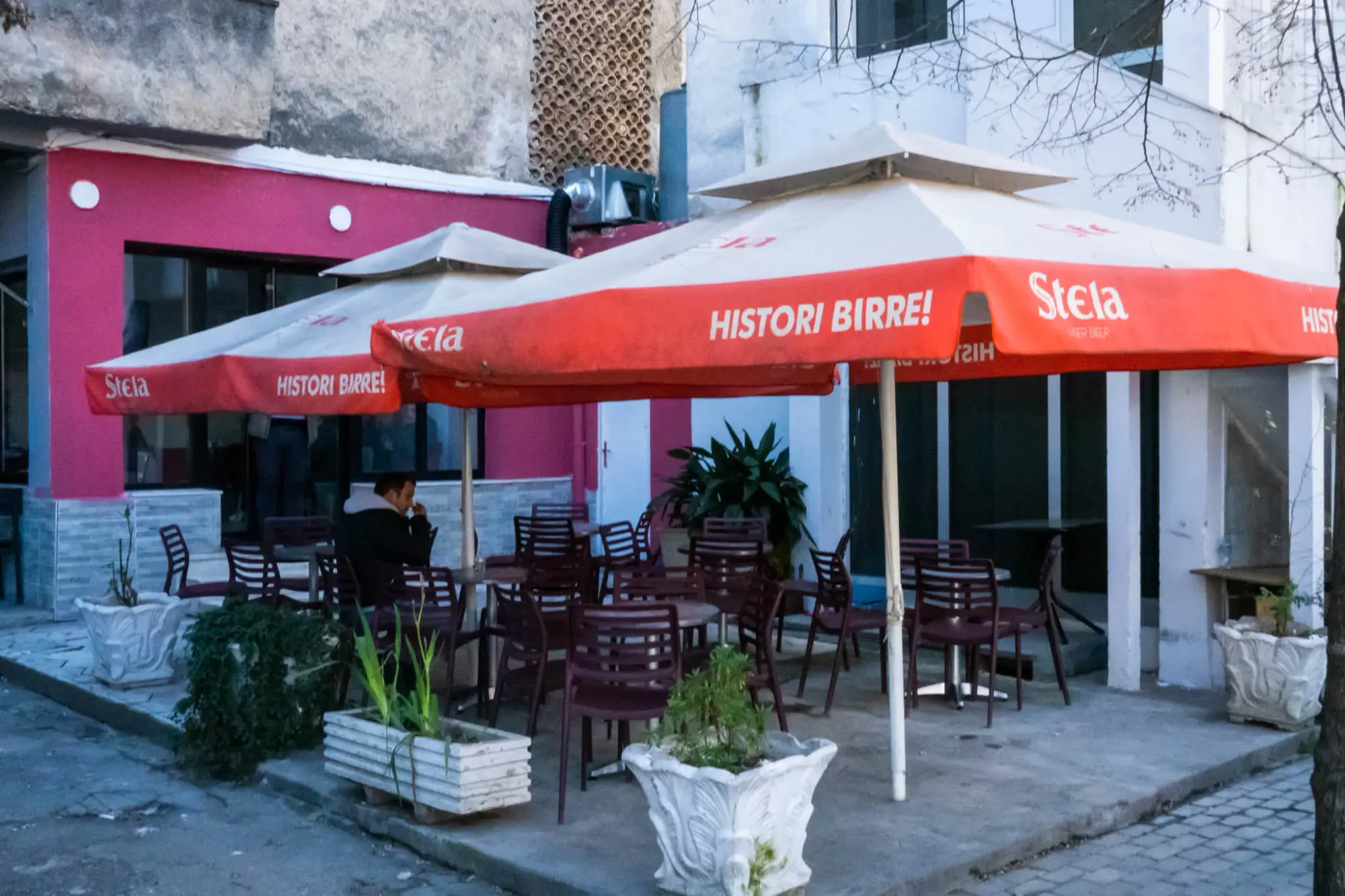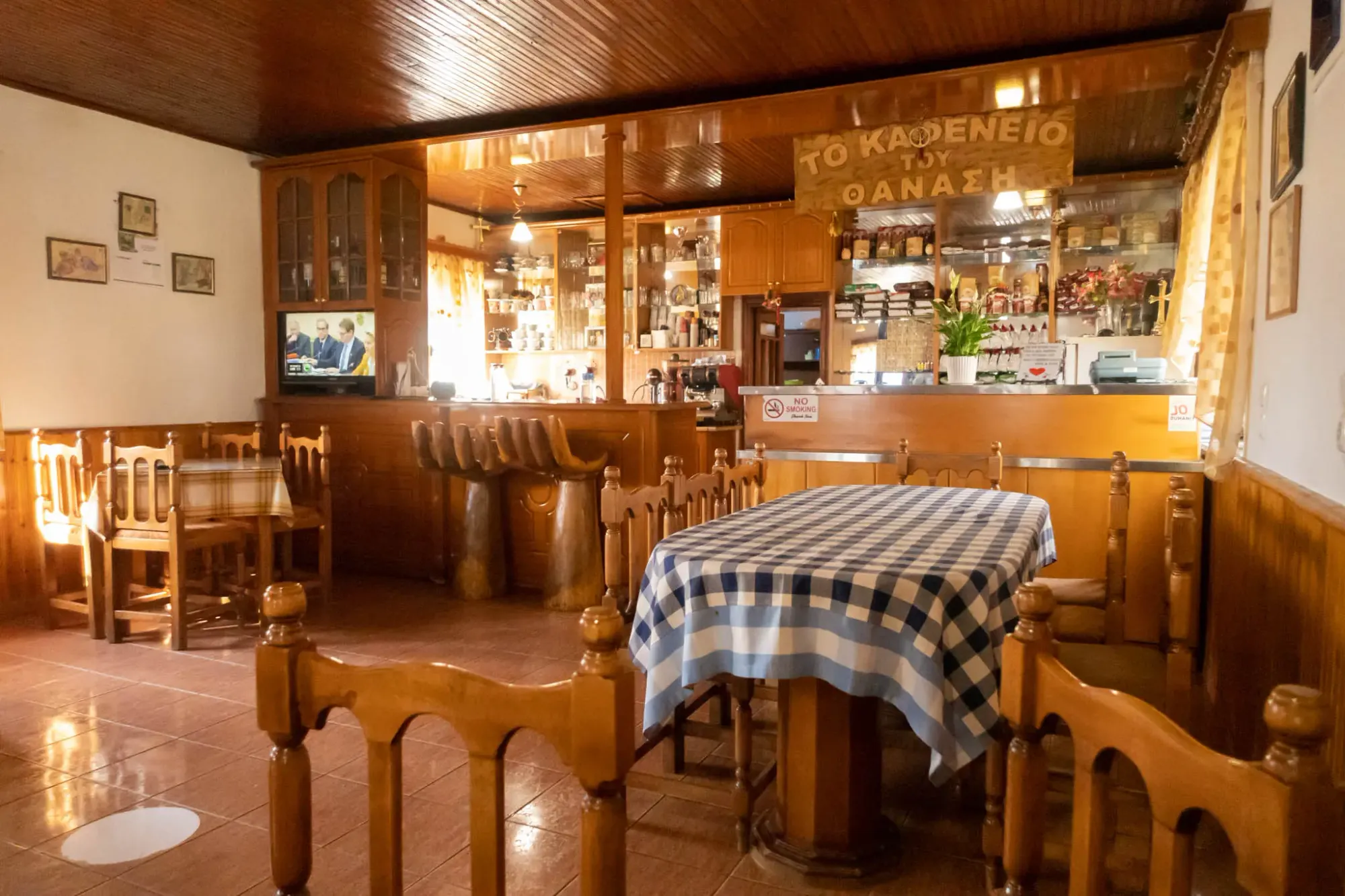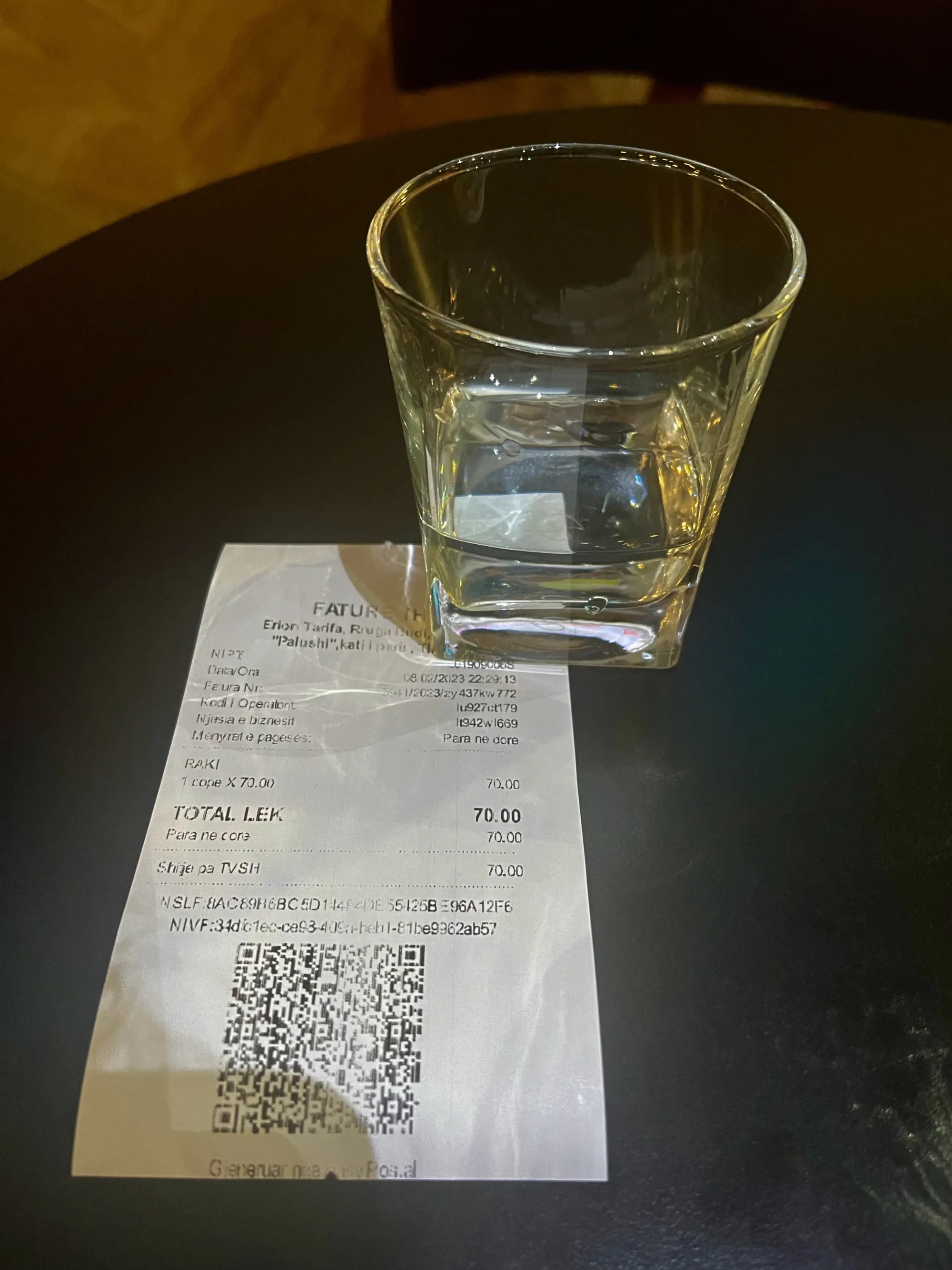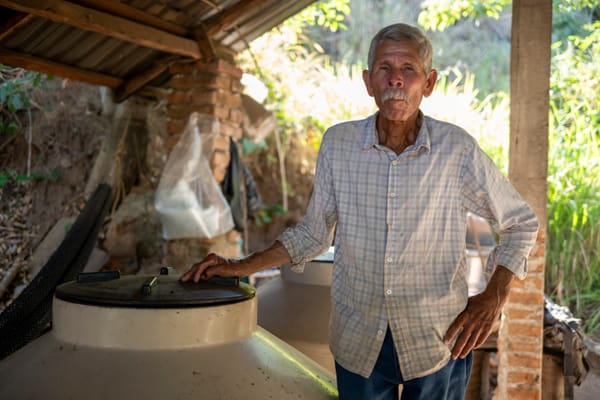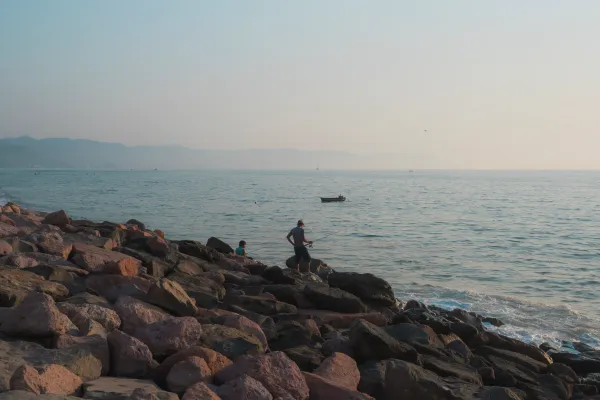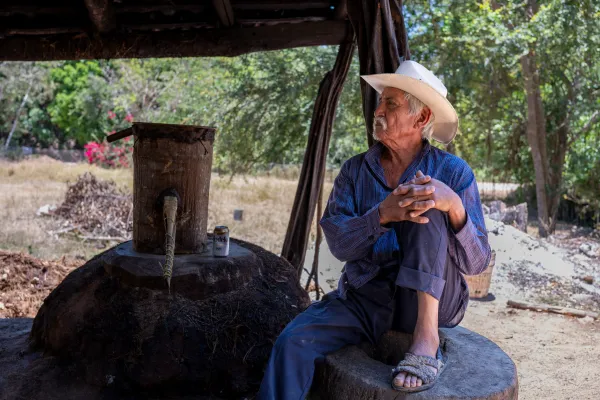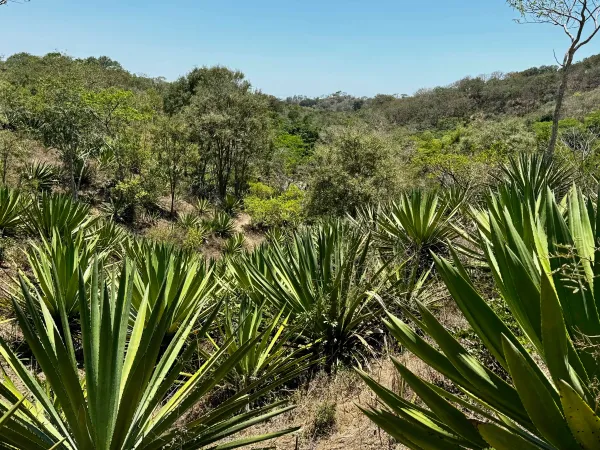TDG #012: The Albanian Kafe
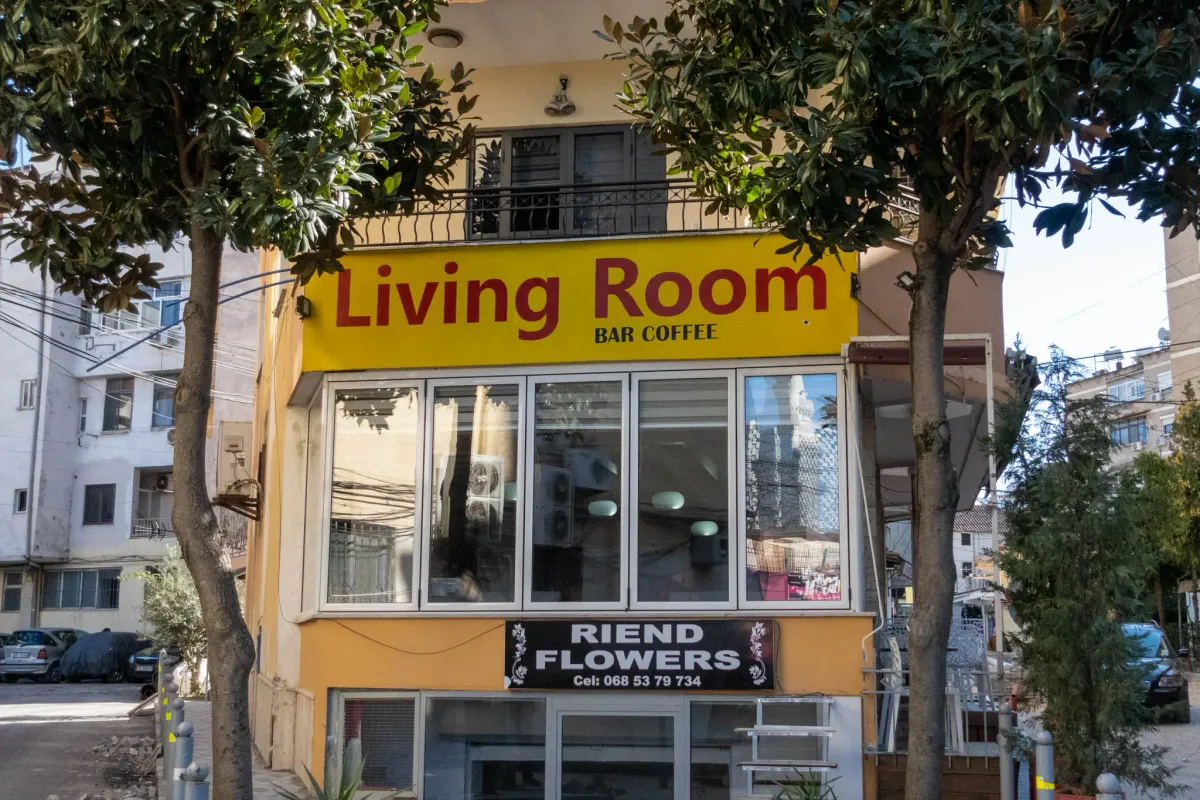
The room is cast in a blue-gray hazy from the cigarette smoke. A couple of old couches and a few cheap tables are scattered throughout. A handful of people are gathered around the small cast iron wood-burning stove in the middle of the room. Behind the small bar, a lady lifts a large plastic water bottle and pours some raki into a glass.
In Albania, the humble kafe is something special.
Once you spend a few days or weeks in a place, you notice smaller details. A few weeks of daily walks and consistent themes will emerge - you'll get a sense of what the country and people prioritize.
It doesn't take much time in Albania before you start noticing the ubiquitous kafe (or kafene) seemingly on every street, city, town, or village. I mean everywhere and at all hours of the day. If you walk through a town or village, regardless of the time of day, the kafe will have some patrons. In the morning, it's full of people having an espresso. By the afternoon and into the evening, the drink changes from espresso to beer and/or raki (a type of brandy).
The thing is, the kafes don't look like your average U.S. variation of a cafe - hipster coffee shops with artisanally selected free-trade coffee beans, full of 20-40 somethings on their MacBooks ordering $10 oat milk lattes. I know these places. I frequent these places. I like my oat milk lattes.
But the Albanian kafes are a bit more austere.
From the outside, they'll look like a relatively nondescript storefront with a 20-year-old sign with some variation of the word "bar/kafe." If you peek inside, you'll find a haphazard assortment of old couches, basic tables, chairs, and often some flat-screen TVs.
Put plainly - there's no aesthetic. That is unless you classify a room full of middle-aged Albanian men watching soccer as an "aesthetic."
But seriously, these kafes are truly everywhere. They became such a recognizable part of my time in Albania I became enamored with them. Why are there so many? How can they always be busy? Are there kafe turf wars? Do they all shop at the same furniture store?
When I asked people about them, the response would often just be a little chuckle and an offhanded acknowledgment of the quantity. Eventually, I managed to talk to my friend Dini who put it like this:
They are an institution in Albania. You solve everything there, like private and public offices.
So there it is, the Albanian kafe is no mere place for refreshments. It's a town square, a place for refuge, a democratic venue where there is no problem too big, nor too small, to solve.
Peering through the windows of a kafe was like looking back at some magical time that felt familiar but never really existed. Stepping into one was another matter entirely. During my kafe dwelling days and nights, I've learned there are some ground rules.
First and foremost, these are not the kind of places where you look up "best cafe in Albania" for reviews. The reviews don't matter - everything you get will be poured out of an espresso machine, beer can, or plastic jug. Just pick one that looks the most curmudgeonly. A tattered sign where the word "kafe" is barely legible? Perfect. And that also goes for the clientele - there's no room for mustachioed men serving craft cocktails in kafe land. You want the old, institutional neighborhood joint that has been around for decades. Better yet, if you're staying somewhere for a few nights, visit the same kafe a few times and get to know the owner/bartender.
Most likely, whichever kafe you pick, everyone there knows each other. Just by walking through the door, your presence is known. It'll feel like those old western movies where a mysterious out-of-towner walks through the door, and the music stops. But Albanians are lovely people, so in all honesty, the questioning gaze will be more out of curiosity than anything.
There will be frequent bickering and lewd gesturing amongst the patrons about soccer, politics, and/or whatever topic du jour. Remember, these folks have been invaded by and comingled with Italians for hundreds of years - loud voices and vigorous hand gesturing is their love language.
Finally, the order at the kafe is simple: espresso, beer (Korça or Peja), or raki. Any and all are acceptable at any time of the day. And, speaking of raki, if it's poured from a nondescript plastic/glass bottle, that means you have the good stuff. Everyone makes raki in Albania or at least knows someone who makes raki - it's a tradition, a rite of passage, and a source of pride. Odds are the kafe owner homemade the raki or got it from a friend, and it will be pretty damn good. And cheap, very cheap. Even in Tirana, a glass of raki will run you about 70 Lek, which is ~ $0.62. The informal, free market raki economy seems to work pretty damn well.
I fell in love with the Albanian kafes. They are so unapologetically unique. They dig their curmudgeonly heels in and refuse to change. They are bastions of simplicity in an increasingly complex world. Rare holdouts that offer a place for community, discourse, and laughter. Time spent at a kafe provides much-needed clarity.
Alright, sure, the raki is great too.
